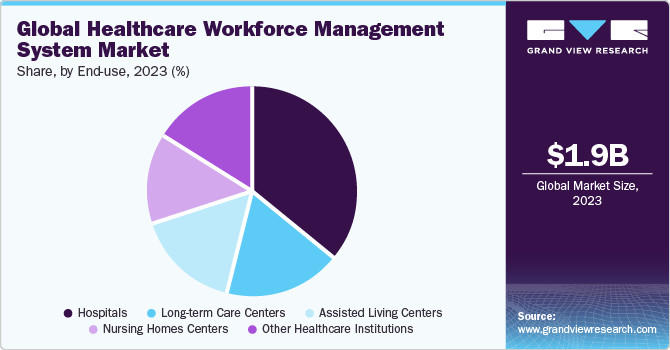The Rise of Healthcare Workforce Management Systems: A $1.7 Billion Opportunity by 2028?
The healthcare industry is undergoing a period of rapid transformation, driven by technological advancements, evolving patient needs, and mounting pressure on healthcare organizations to improve efficiency and reduce costs. One key area experiencing significant growth is the adoption of healthcare workforce management systems. These systems are designed to optimize the scheduling, deployment, and performance of healthcare staff, thereby enabling healthcare organizations to deliver better patient care while minimizing operational expenses.
The global healthcare workforce management system market is projected to reach $1.7 billion by 2028, growing at a CAGR of 12.8% during the forecast period. This growth can be attributed to various factors, including the increasing demand for efficient workforce management solutions, the growing adoption of cloud-based technologies, and the rising healthcare costs.
Key Trends Driving Market Growth
Several key trends are propelling the growth of the healthcare workforce management system market. These trends are shaping the landscape of healthcare workforce management and creating new opportunities for technology providers.
1. Rising Healthcare Costs
Healthcare costs are escalating globally, driven by factors such as aging populations, increasing incidence of chronic diseases, and advancements in medical technology. Healthcare organizations are under immense pressure to control costs while maintaining high-quality patient care. Workforce management systems offer a crucial solution by optimizing staffing levels, reducing overtime, and minimizing unnecessary expenses.
2. Labor Shortages and Staffing Challenges
The healthcare industry is grappling with severe labor shortages, particularly in critical areas such as nursing, medical technology, and pharmacy. Attracting and retaining qualified healthcare professionals has become a significant challenge for healthcare organizations. Workforce management systems can assist in addressing these challenges by providing tools for efficient scheduling, talent management, and employee engagement, thereby improving employee satisfaction and reducing turnover rates.
3. Increasing Adoption of Cloud-Based Technologies
Cloud computing has revolutionized the healthcare industry, offering numerous benefits such as scalability, flexibility, and cost-effectiveness. Healthcare workforce management systems are increasingly adopting cloud-based architectures, providing organizations with greater accessibility, agility, and scalability. Cloud-based systems also enable seamless integration with other healthcare IT systems, streamlining operations and improving data sharing.
Challenges Facing the Market
While the healthcare workforce management system market is experiencing significant growth, it also faces a number of challenges. These challenges are hindering the widespread adoption of these solutions and require careful consideration by technology providers.
1. Data Security and Privacy Concerns
Healthcare data is highly sensitive, and organizations are obligated to adhere to stringent regulations such as HIPAA in the United States. Workforce management systems handle sensitive employee information, including personal data, medical records, and performance data. Therefore, data security and privacy are paramount concerns. Technology providers must implement robust security measures to safeguard sensitive data and ensure compliance with industry regulations.
2. Integration with Existing Systems
Healthcare organizations often have a complex IT infrastructure with various legacy systems in place. Integrating a new workforce management system with existing systems can be a challenging task, requiring significant time and resources. Technology providers must prioritize seamless integration to ensure a smooth transition and minimize disruptions to daily operations.
3. Resistance to Change
Implementing new technology, especially within a traditionally conservative industry like healthcare, can face resistance from staff. Healthcare professionals may be accustomed to existing processes and may be hesitant to embrace new systems. Effective communication, training, and ongoing support are essential to overcome resistance to change and ensure successful adoption of workforce management systems.
The Future of Healthcare Workforce Management
The healthcare workforce management system market is expected to continue growing in the coming years, driven by the increasing demand for efficient and cost-effective solutions. Technology providers are continuously innovating to address the evolving needs of healthcare organizations, incorporating advanced features such as artificial intelligence (AI), machine learning (ML), and predictive analytics.
Conclusion: A Vital Tool for the Future of Healthcare
Healthcare workforce management systems are becoming an indispensable tool for healthcare organizations seeking to optimize operations, improve patient care, and control costs. By addressing the challenges and leveraging the opportunities presented by this growing market, technology providers can play a vital role in shaping the future of healthcare workforce management and driving positive change in the industry.



















